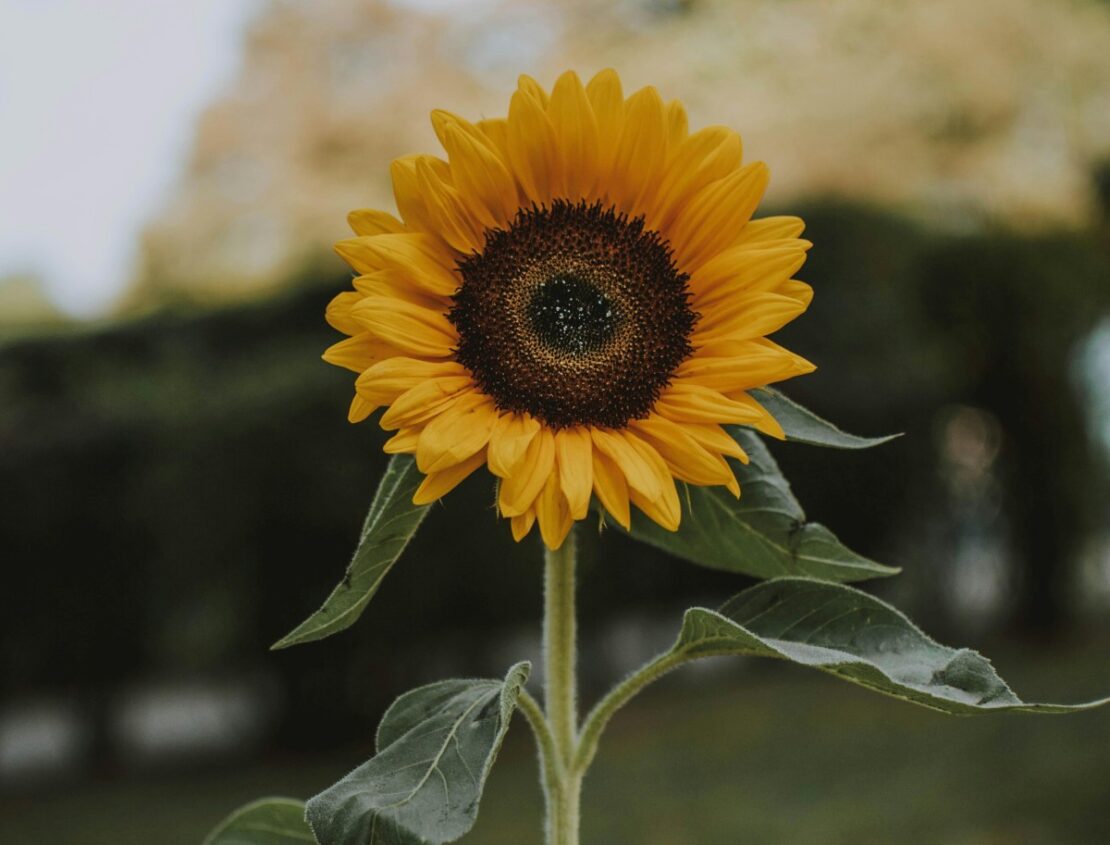
Let’s Celebrate These 8 Plants That Are Associated With the Sun
As we slowly transition out of the depths of winter and, if we are fortunate, are blessed with sun-ray glimpses of spring, this can be an excellent time to celebrate plants associated with the Sun. If you are familiar with herbal systems that place a strong emphasis on the energetics of herbs, such as Ayurveda and Chinese medicine—and/or if you are an astrology enthusiast—the ways in which planetary bodies correspond to different herbs may seem fairly intuitive. If this is new to you, an astrological perspective on herbs can add dimension to how we view and work with our plant friends.
Thinking about herbs in relationship to the planets is a way to enrich our understanding of plant energetics. A plant’s energetics are the subtle effects that the herb has on our body and/or mind. For instance, there are warming nervines such as ashwagandha (Withania somnifera), valerian (Valeriana officincalis), and tulsi (Ocimum tenuiflorum), and cooling nervines such as gotu kola (Centella asiatica), skullcap (Scutellaria lateriflora), and lemon balm (Melissa officinalis). Depending on whether you run warm or cool, and depending upon the nature of the imbalance you are addressing and the current climate, you may wish to favor a cooling nervine over warming, or vice versa. We can also connect the energetics of herbs to the energetics and qualities of the planetary bodies in our beautiful universe, such as the Sun and the Moon.

Qualities Associated with the Sun
To understand how we correlate plants with the Sun, let’s first consider some of the qualities of the Sun. The Sun is:
- Warming
- Full of yang energy
- Fiery
- Associated with pitta dosha
- Expansive in nature
- Energizing
- Life-giving
- Dependable
- Strong
- Rhythmic
Therefore, plants that are associated with the Sun have one or more of these qualities. For instance, cinnamon (Cinnamomum spp.) is warming, St. John’s wort (Hypericum perforatum) is uplifting, sunflowers (Helianthus annuus) are akin to the image of the Sun itself, and calendula (Calendula officinalis) displays blossoms that echo the warming tones of sunshine. Let’s take a deeper look into why each of the following plants is associated with the Sun and how we can work with and enjoy these plants in order to celebrate and further steep ourselves in the warming, energizing rays of the Sun.
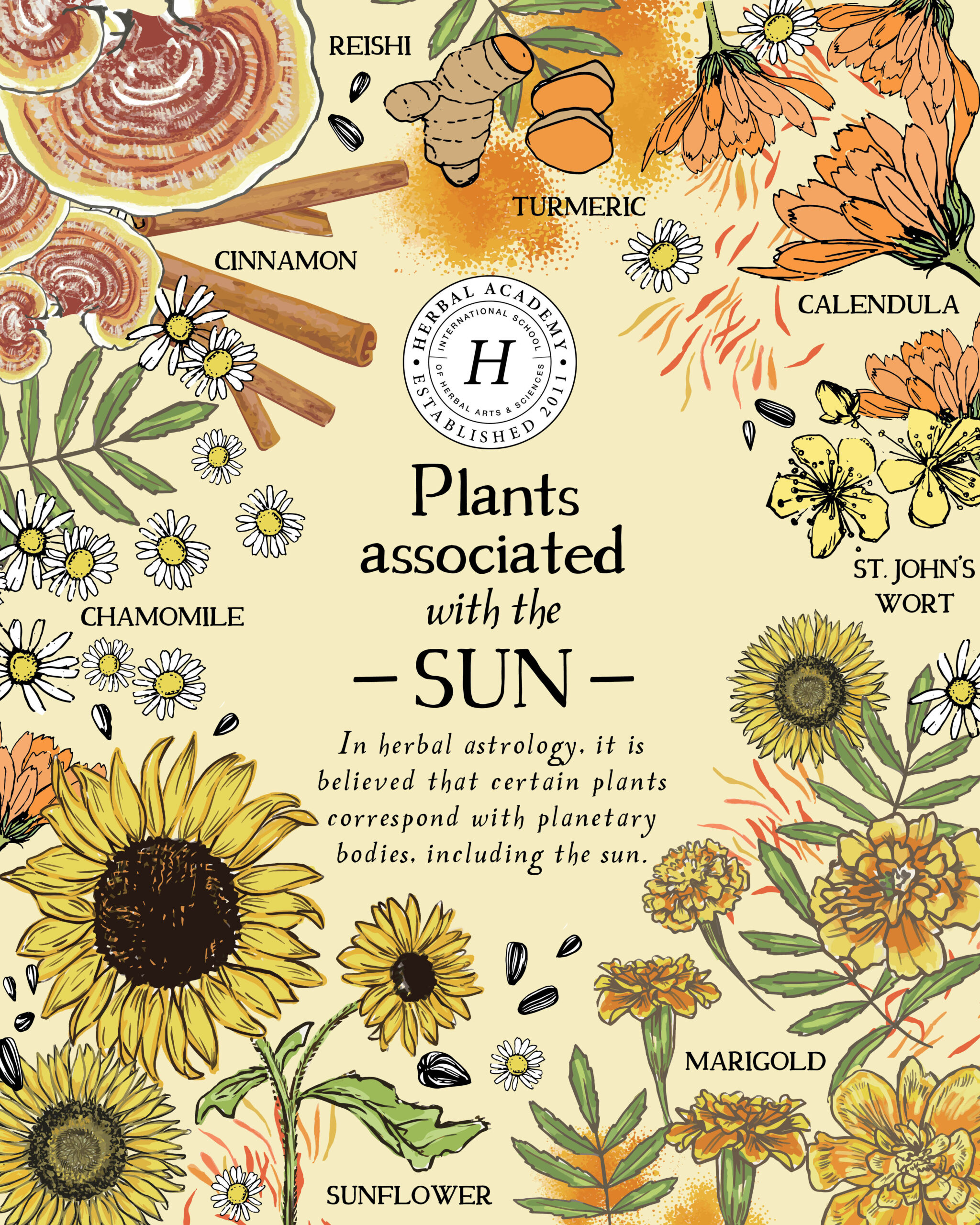
8 Plants Associated With the Sun
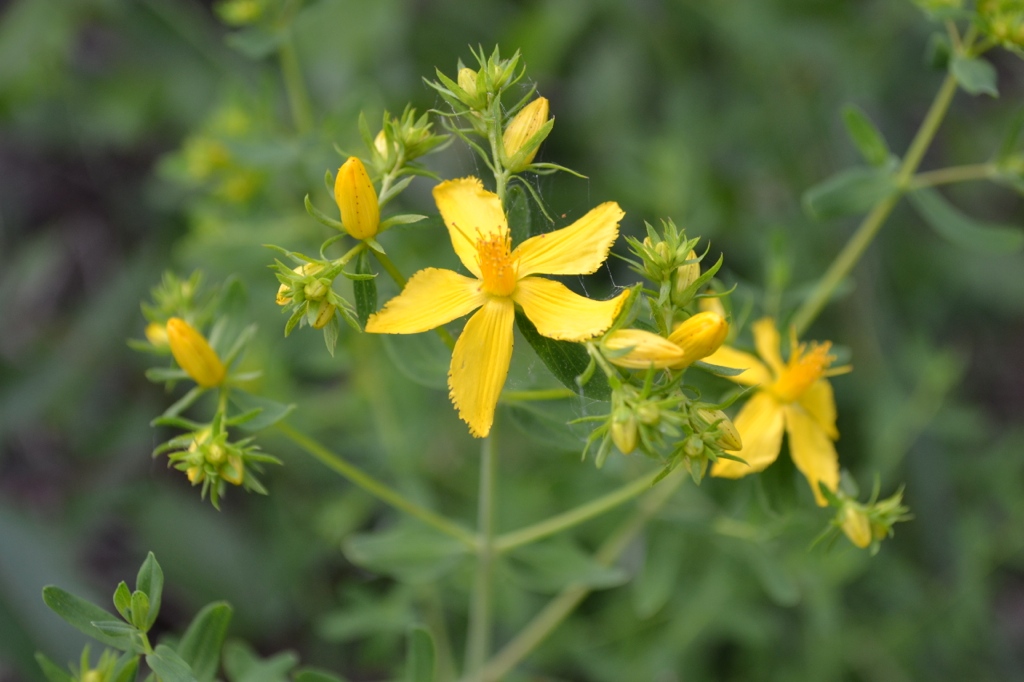
St. John’s Wort (Hypericum perforatum) Aerial Parts
St. John’s wort, with its cheerful yellow blossoms, has many sunny attributes and has long been associated with solar energy. Not only does St. John’s wort thrive in sunshine and bloom around midsummer at the peak of sunlit hours, but it is also well-known for its capacity to uplift the mood. This impressive and multi-faceted nervine is known for its usefulness in easing seasonal depression. Herbalists use the oil topically to ease nerve pain and applied as an oil, St. John’s wort can soothe bruises, varicose veins, and mild burns. Before taking St. John’s wort, check its interactions with any medications you may be taking, as it is contraindicated with most forms of oral birth control and a number of other medications, including SSRIs. Also, it may increase photosensitivity in some individuals, so use caution if you tend to be sensitive to sunlight or plan on spending ample amounts of time in the Sun. A little sunshine can do wonders, but we can all have too much of a good thing!
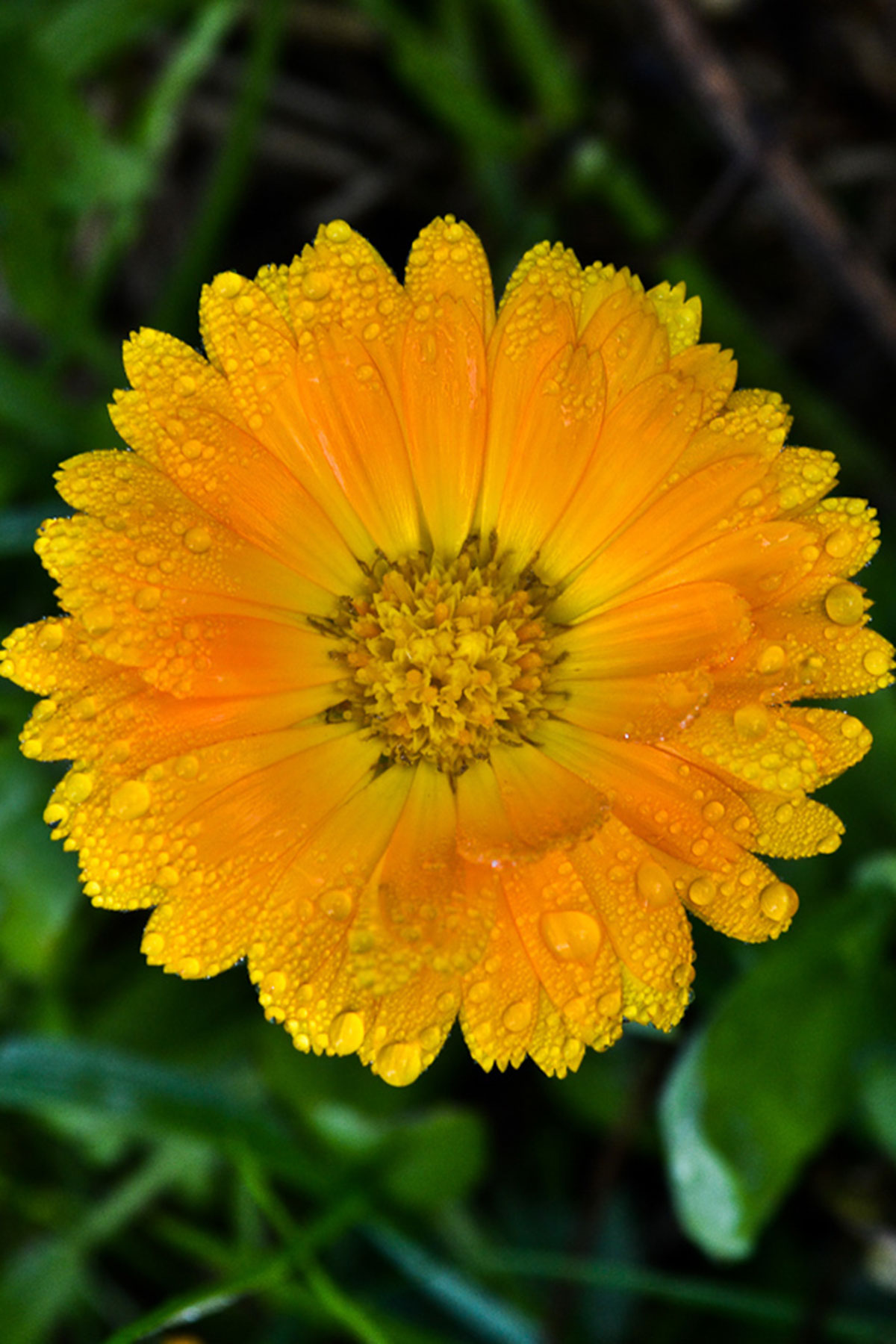
Calendula (Calendula officinalis) Flower
Calendula, sometimes called “bride of the Sun” bestows cheerful yellow-orange blossoms that bloom from late spring all the way through the first frosts of autumn. These sunny-looking flowers, like many other orange-colored foods such as sweet potatoes and pumpkin, are remarkably rich in carotenoids, which benefit the eyes and immune system. Used externally in salves and oils, calendula soothes skin rashes, inflammation, and irritations. Calendula’s bright petals also go beautifully in facial steams, and extractions from the flower may be used in a number of skincare products as a soothing agent.
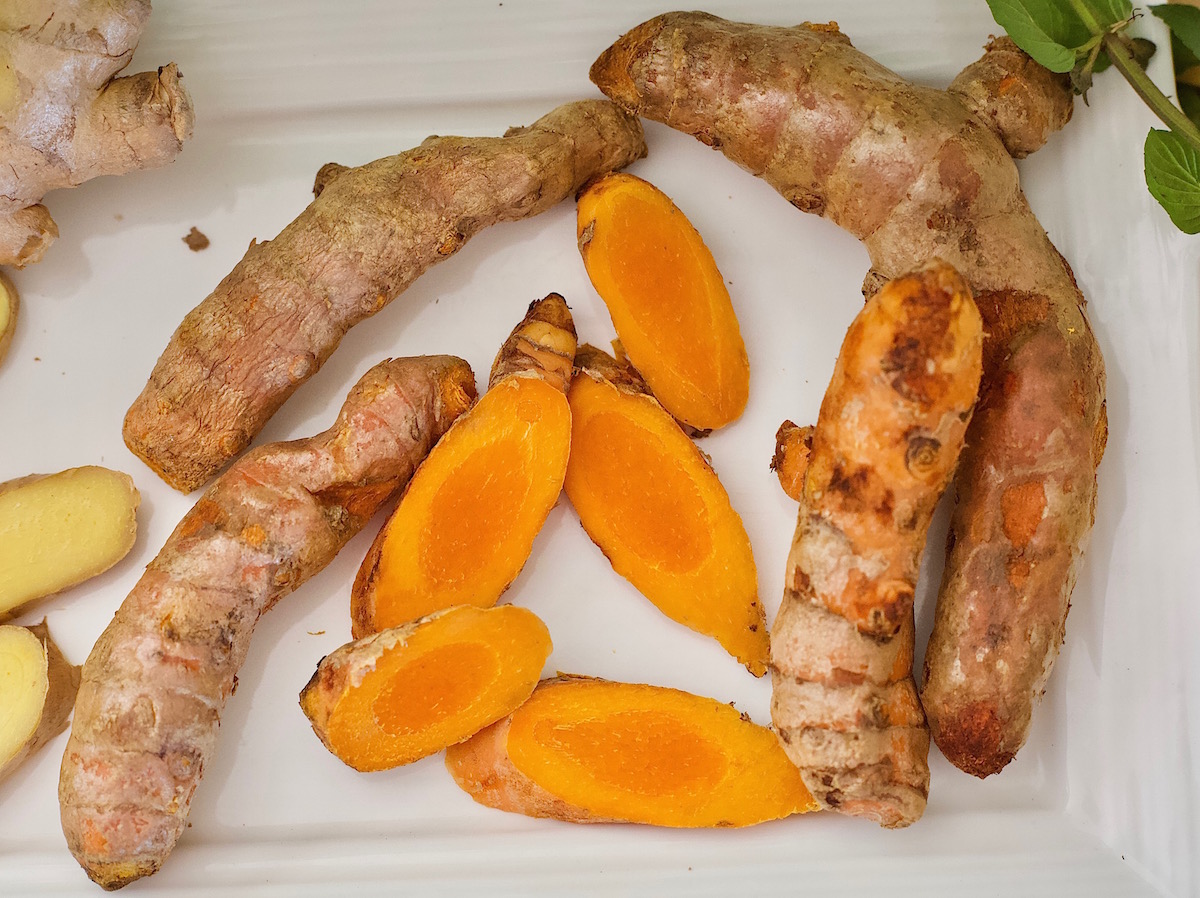
Turmeric (Curcuma longa) Rhizome
Like St. John’s wort and calendula blossoms, the orange-yellow hue of turmeric alone echoes the warming color of the Sun. Adding to turmeric’s sunny appearance, this multifaceted cooking spice is warming in nature. Just like the Sun, the extent to which we can benefit from turmeric is seemingly endless. Use turmeric to add flavor and color to savory dishes such as soups and curries. Turmeric is also well-known for its anti-inflammatory properties when used both internally and externally. In addition, turmeric has antimicrobial properties and benefits gut health. Also, just like time spent under the Sun’s warming rays, turmeric benefits circulation.
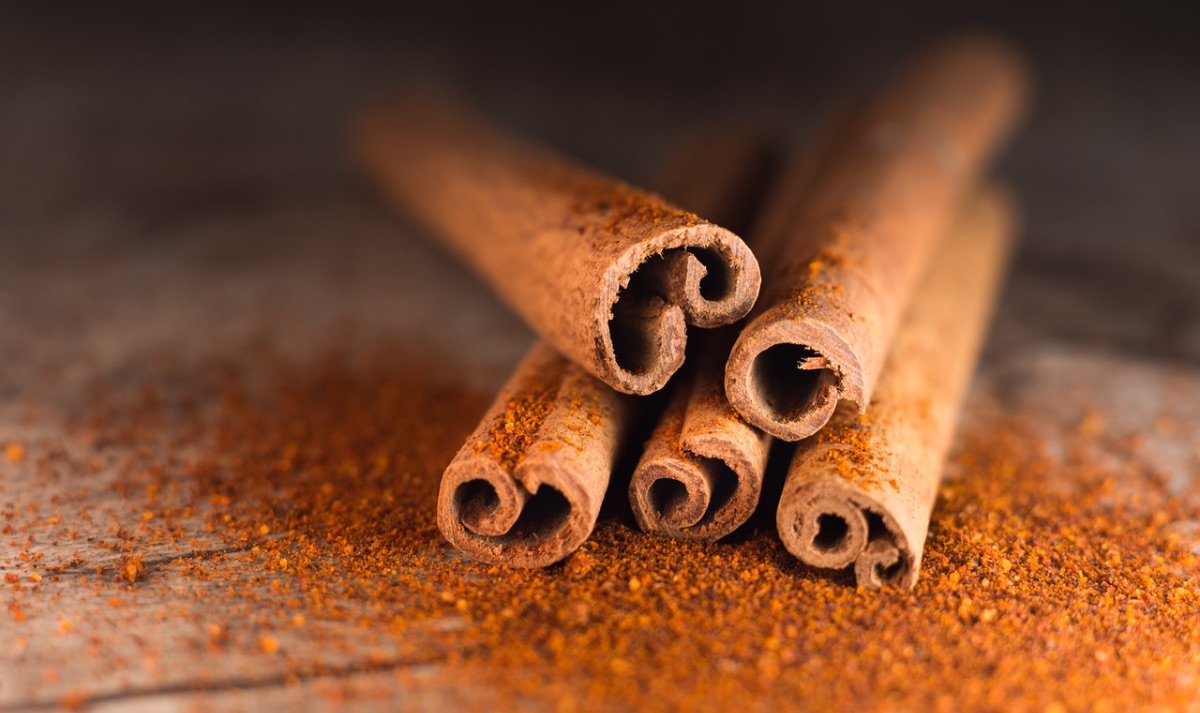
Cinnamon (Cinnamomum spp.) Bark
Another warming cooking spice, cinnamon assists in the digestive process while supporting circulation. Delicious in sweet and savory dishes alike, cinnamon works as a carminative, meaning that it supports the gut by easing excess gas and indigestion; that can make it useful in digesting heavy foods such as dairy and potatoes. Think of cinnamon like adding a pinch of gentle heat. It enkindles the agni (digestive fire) without aggravating pitta dosha (Dass, 2013). This multi-faceted, comforting cooking spice is also known for its ability to help balance blood sugar levels and reduce insulin insensitivity.

Reishi (Ganoderma spp.) Mushroom
Like most other herbs associated with the Sun, reishi mushrooms have a warming energy. These mushrooms can be recognized by their deeply colored, often shiny, broad caps that fan and spread out like the rays of the Sun itself. Reishi, like many other superstar functional mushrooms, is an adaptogen. It is useful for lung health, boosting lung capacity and endurance, and is respected as an aid to longevity. Reishi functions as an all-around adaptogen, supporting immune health and the stress response. Dried and ground reishi, with its deep brown color, makes a fine addition to coffee, teas, and chocolates. Learn more in this Herbal Academy blog article, Cooking with Edible Mushrooms: A Beginner’s Guide, and perhaps try your culinary hand with these delicious Herbal Peanut Butter Cups, or double-up on sunny herb goodness with these Cinnamon Creme Chocolate Hearts that call for cinnamon and reishi.
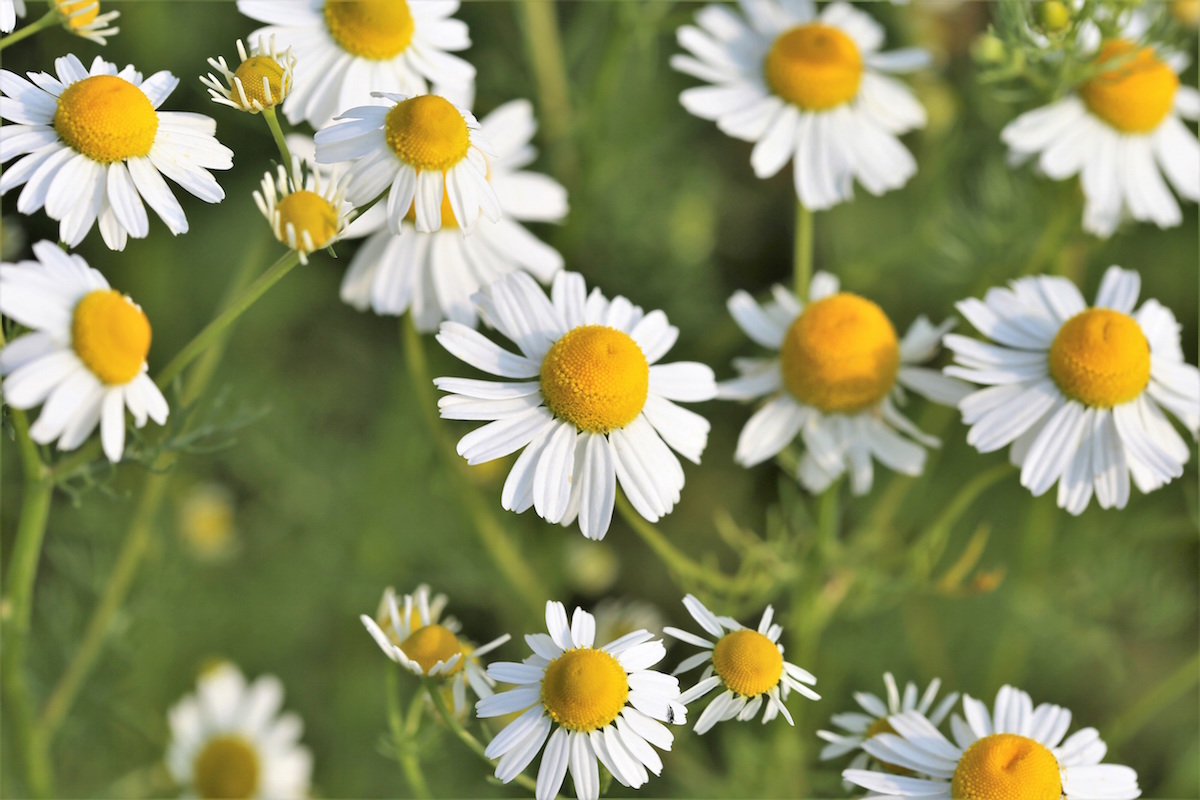
Chamomile (Matricaria chamomilla) Flower
Well-known as a soothing sleep herb, gentle chamomile displays sweet white-petaled, yellow-centered blooms in spring and summer. Chamomile has a mildly cooling energy, which makes it useful during the heat of summer and for pitta conditions. Chamomile tea makes a soothing bedtime tea to calm nerves and ease indigestion. Also, consider chamomile tea as a mild cleanser for oily, irritated, or inflamed skin, and even to combat fungus.
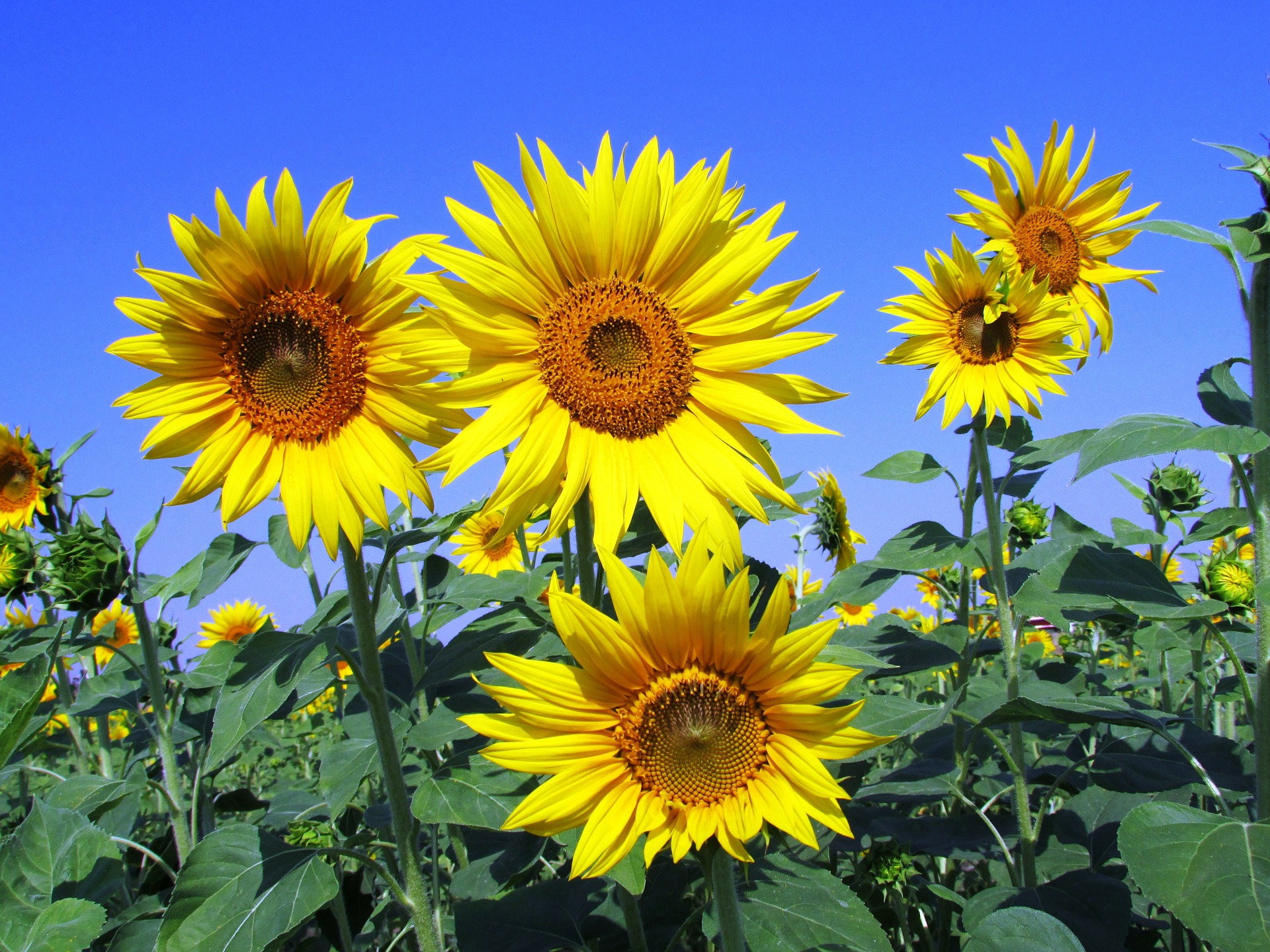
Sunflower (Helianthus annuus)
It doesn’t take much imagination to draw the connection between sunflowers and the Sun. The Latin name for the sunflower, Helianthus annuus, shares linguistic roots with Helios, the Greek sun god. The striking, cheerful sunflower comes into full bloom in summer and early autumn, inviting admirers to relish in its impressive beauty and to savor the lingering rays of late summer and early autumn. According to Ayurveda, sunflower seeds and oil have a mildly cooling energy, so are well-suited for pitta dosha when used both in cooking and externally as a massage or skin oil. According to some sources, however, sunflower seeds have a warming energy. They can be eaten as a qi tonic and to ease constipation when accompanied by dryness (Pitchford, 2002).
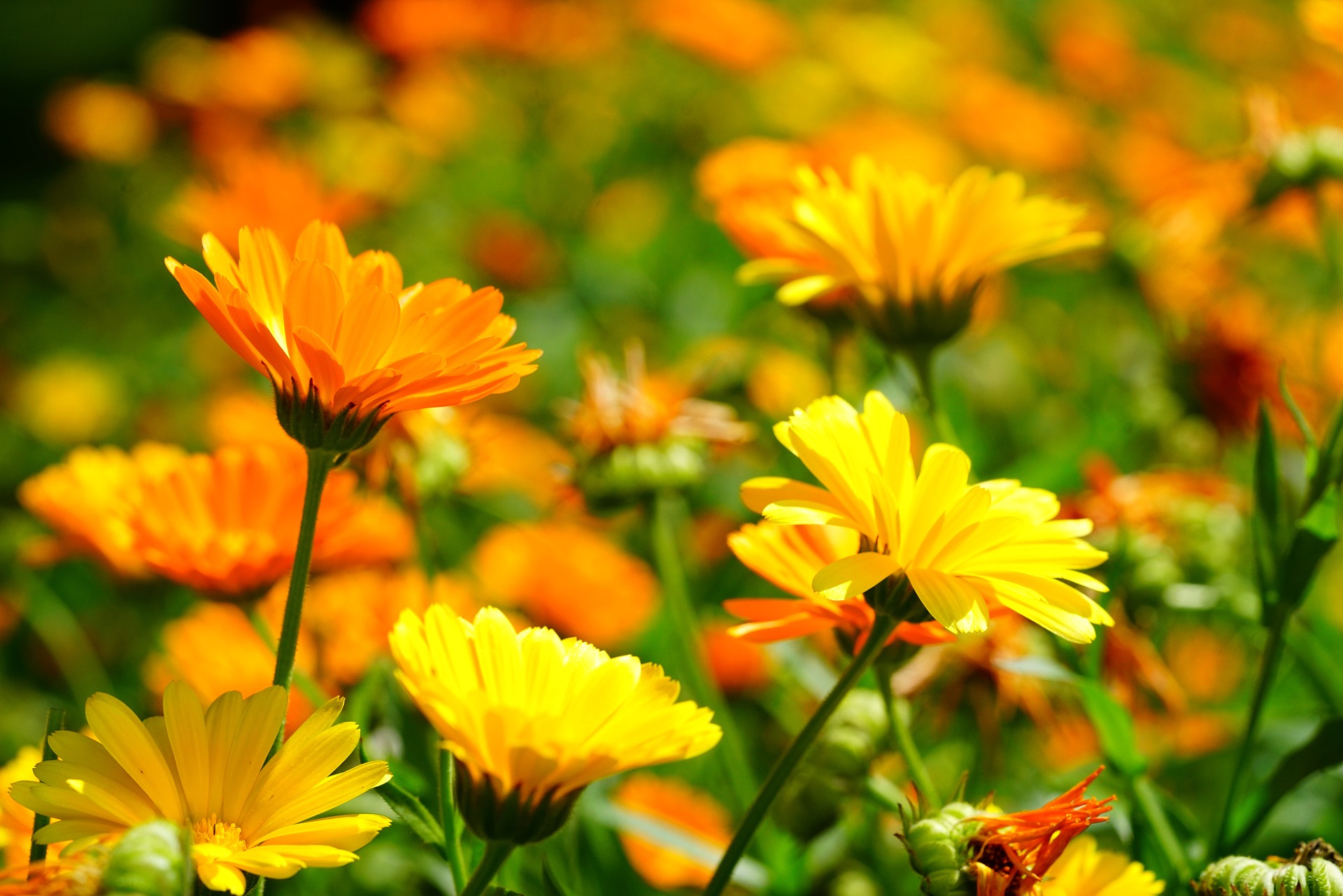
Marigold (Tagetes) Flower
Marigolds are part of the Asteraceae family, and the genus Tagetes actually has about 50 species. If you have ever come across a Dia de los Muertos (Day of the Dead) celebration, you will recognize the sunny golden-orange blooms of the Mexican marigold that brilliantly festoon and adorn the altars for the ancestors. Their brilliant blooms are believed to guide the spirits of the dead home (Kew, n.d.). Marigold leaves and flowers are also used traditionally for their antimicrobial, antipyretic, and antiinflammatory properties; topical marigold preparations may be used to assist in wound repair and for soothing inflamed skin, with studies on animals showing promise in this regard, though more research on humans is needed (Rahman et al., 2020).

Nothing Like Sunshine
Exposure to sunlight is essential for physical and mental health. Let’s also remember that the Sun is crucial for its role in regulating melatonin production, which is a key factor in our circadian rhythms. In addition, sun exposure is needed for vitamin D synthesis, an essential-for-life hormone that assists in healthy bones and immune system function. Also, sunshine is important for our mental health as well. How do you feel when you walk out into the sunshine (especially at the end of a long winter!)? How do you connect with plants associated with the Sun?
This is by no means a limited list of all plants associated with the Sun. What are some of the qualities that remind you of the Sun and which plants embody those sunny qualities for you?
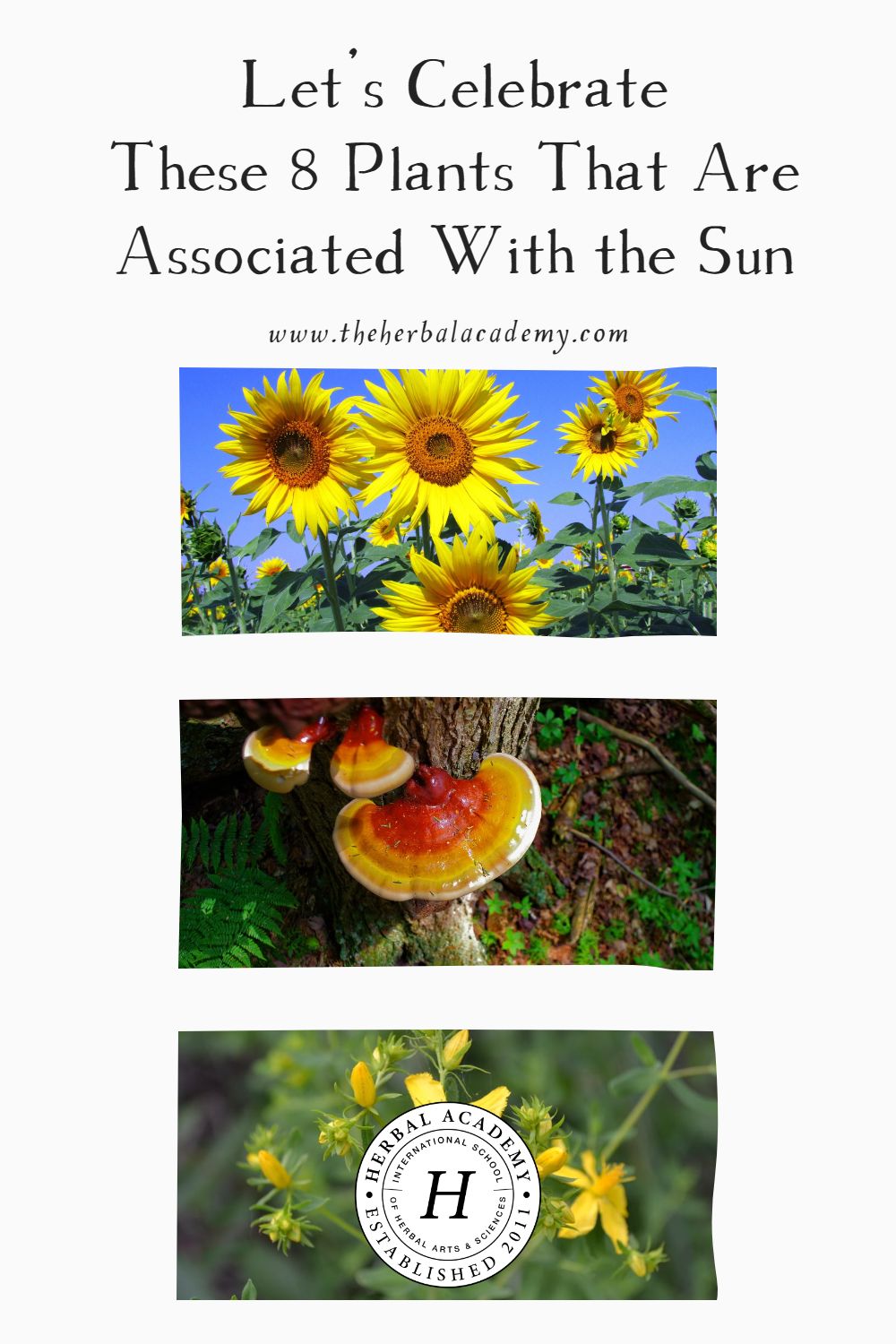
REFERENCES
Dass, V. (2013). Ayurvedic herbology: East & West. Lotus Press.
Kew Royal Botanic Gardens (n.d.). Mexican Marigold. https://www.kew.org/plants/mexican-marigold
Pitchford, P. (2002). Healing with whole foods: Asian traditions and modern nutrition. North Atlantic Books.
Rahman, T., Hasan, M., Hossain, M.T., Islam, S. Rahman, A., Alam, R., & Juvena, N.S. (2020). Differential efficacies of marigold leaves and turmeric paste on the healing of the incised wound in sheep. Journal of Advanced Animal and Veterinary Research, 7(4), 750–757. https://doi.org/10.5455/javar.2020.g477







